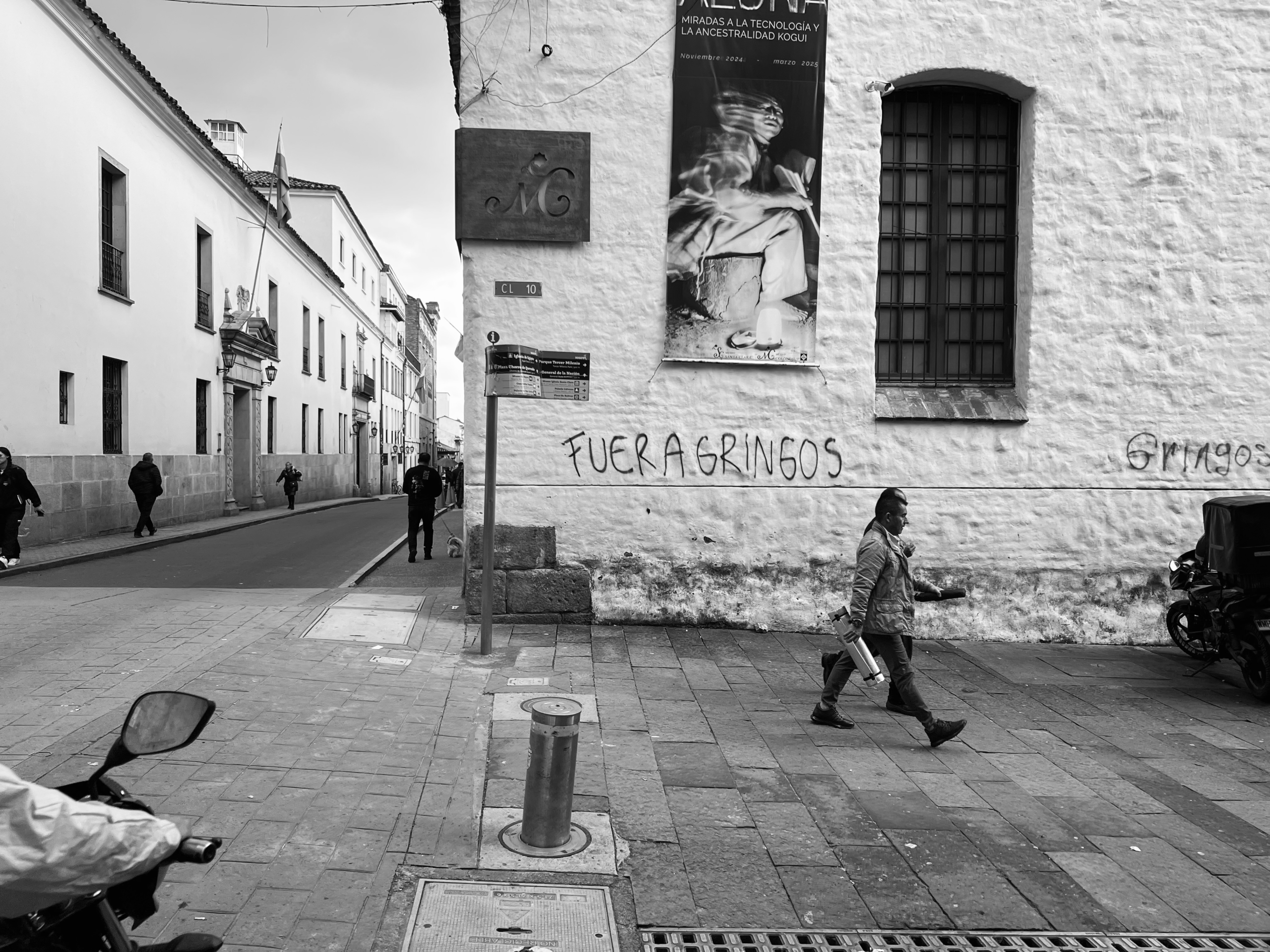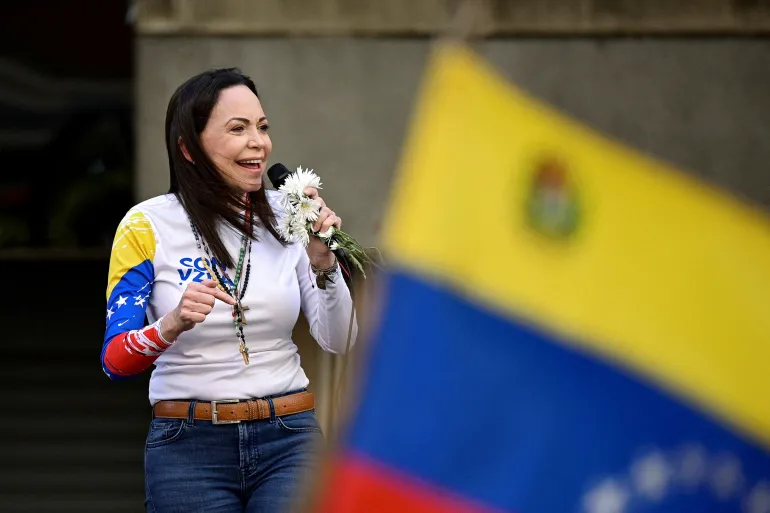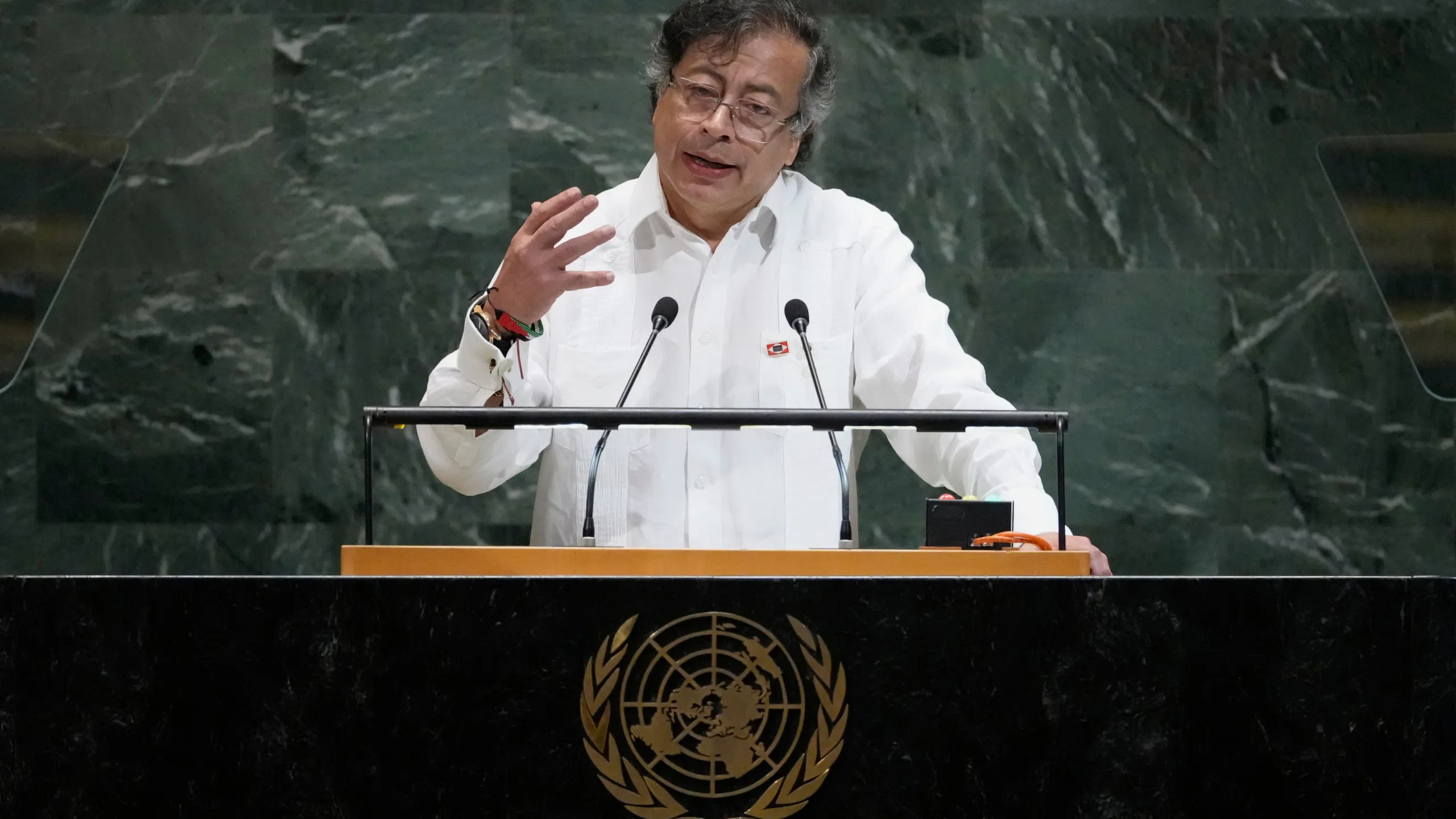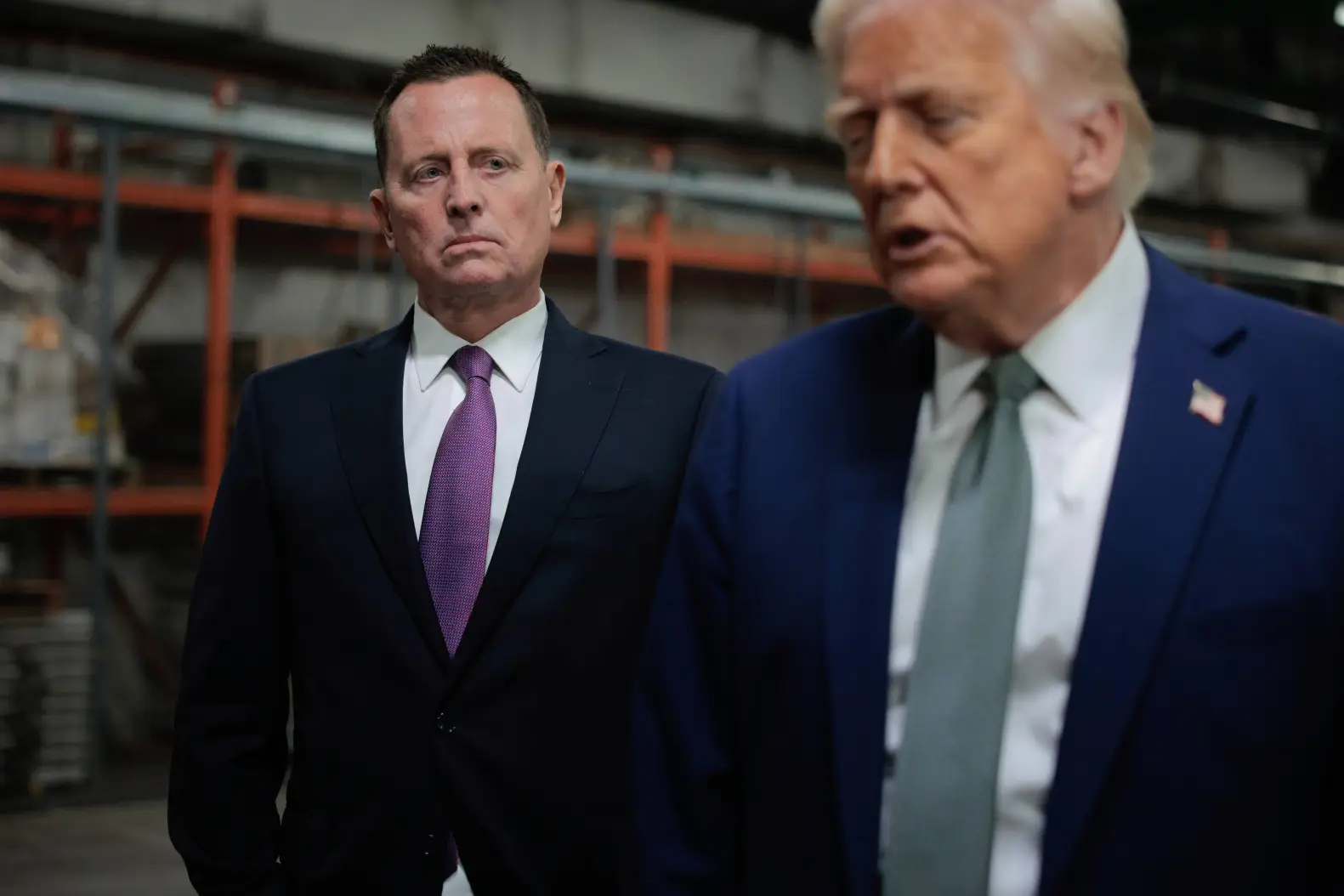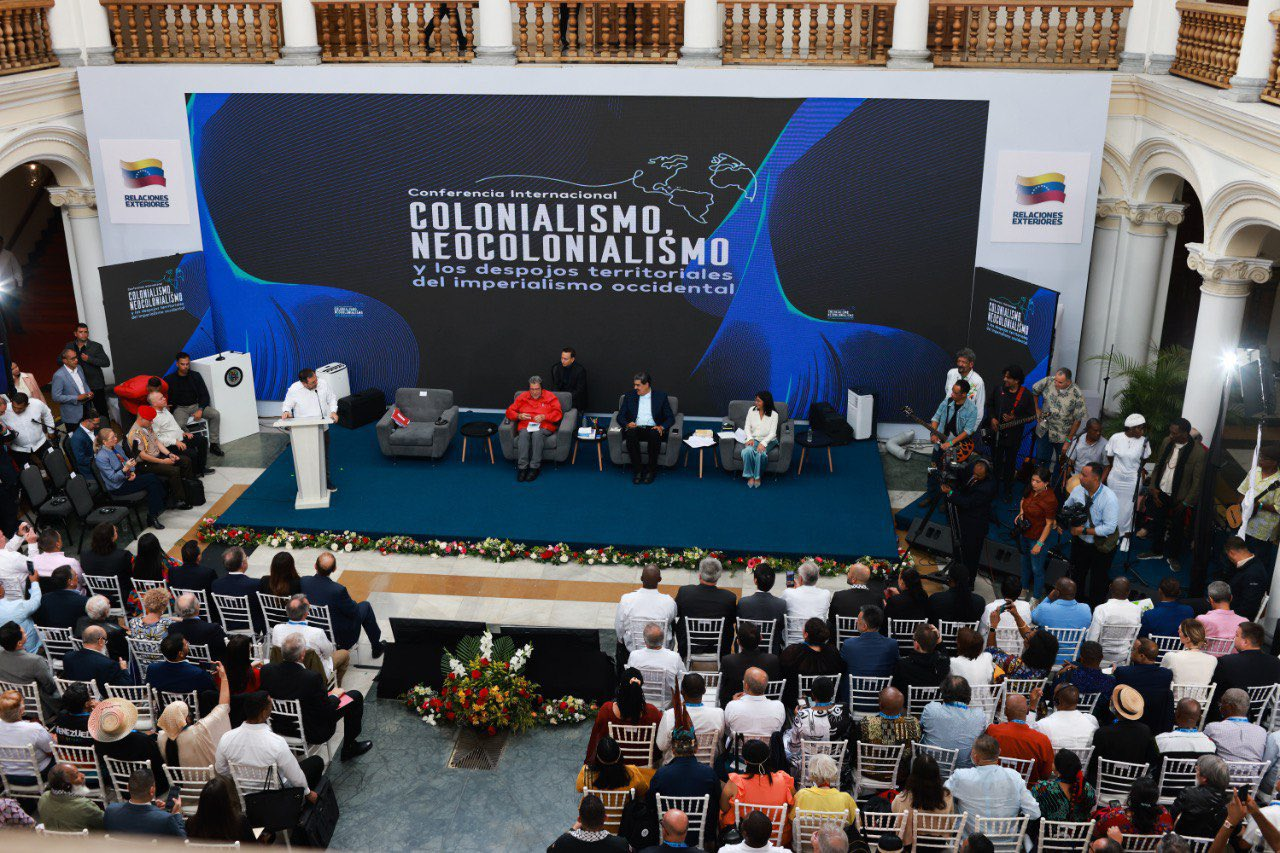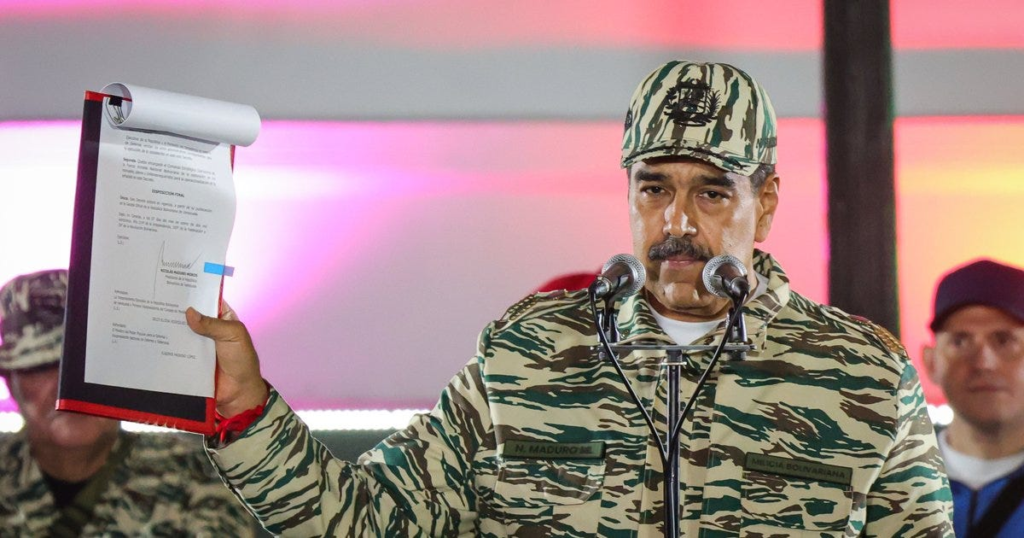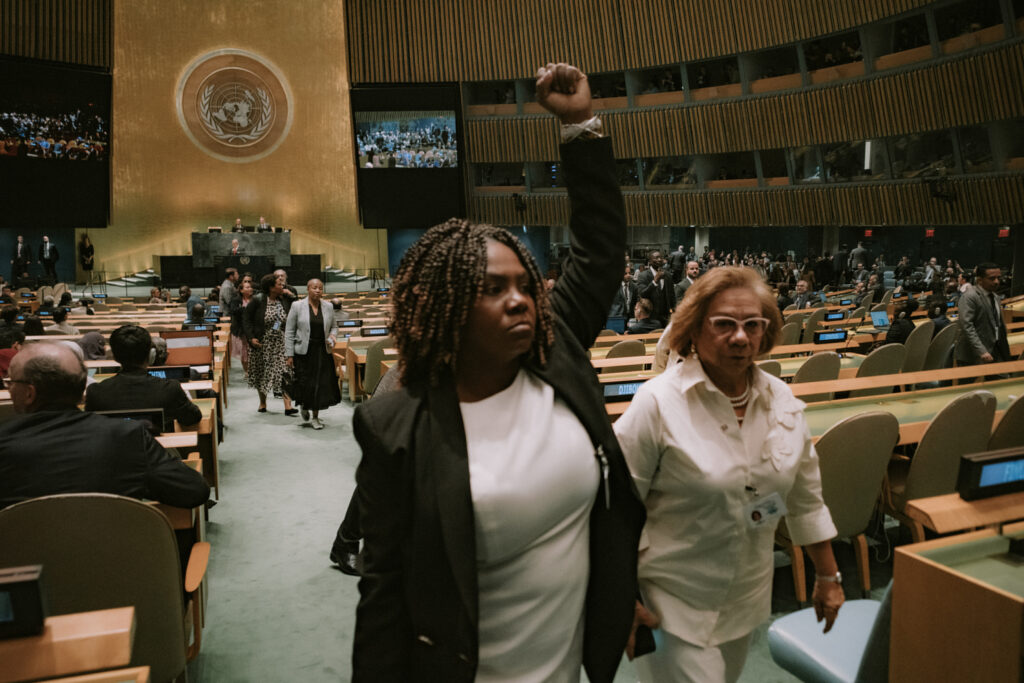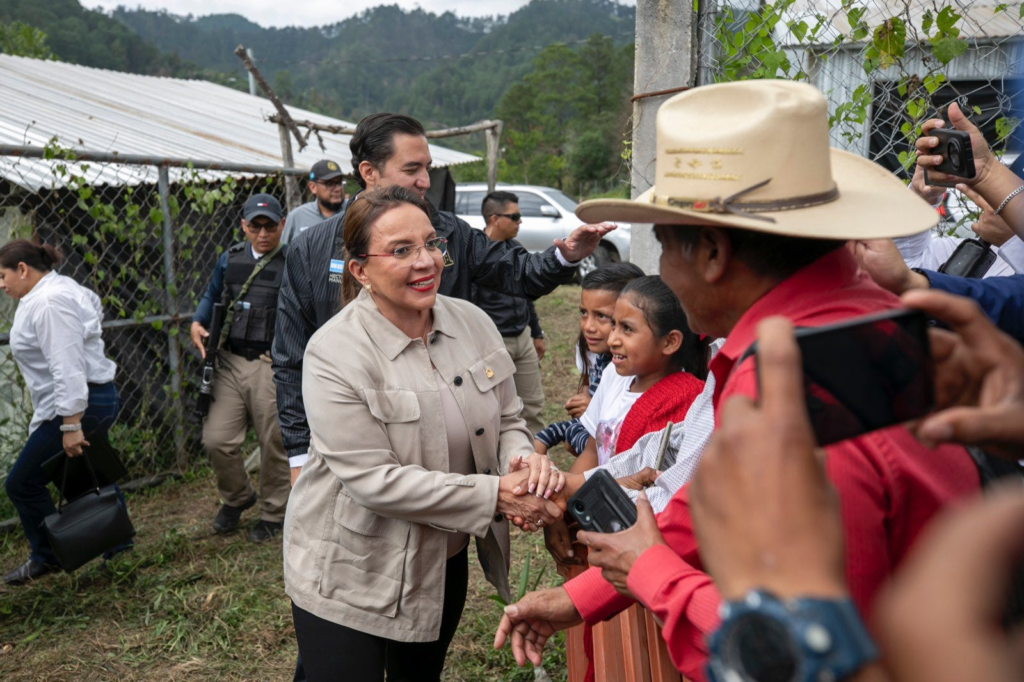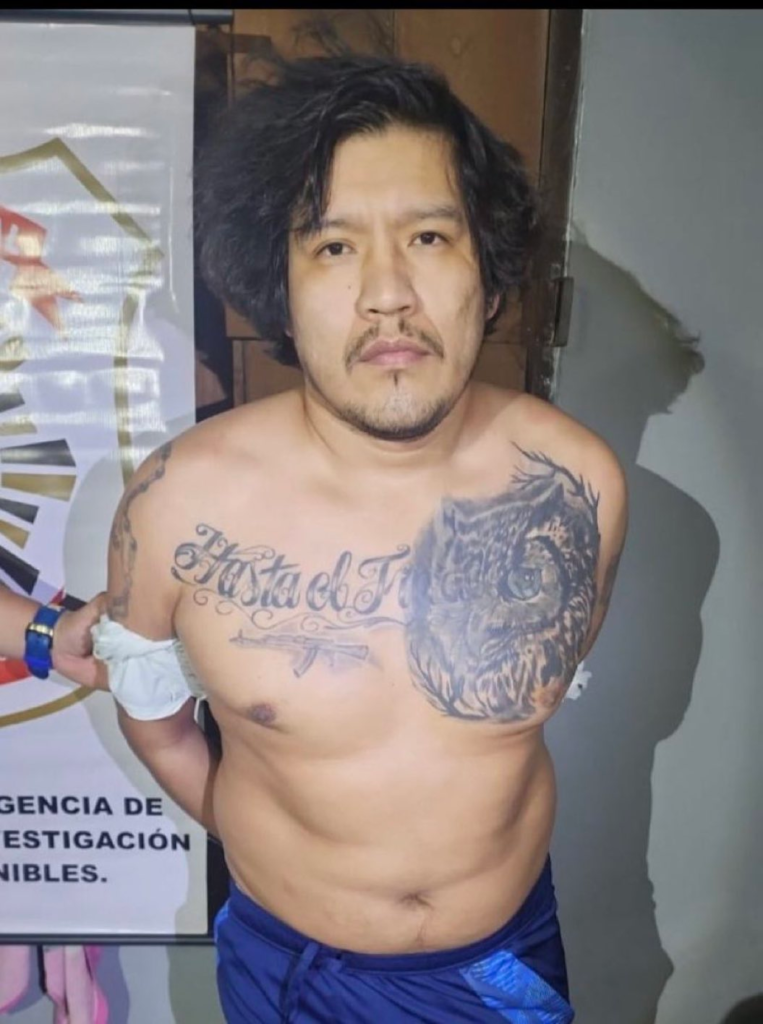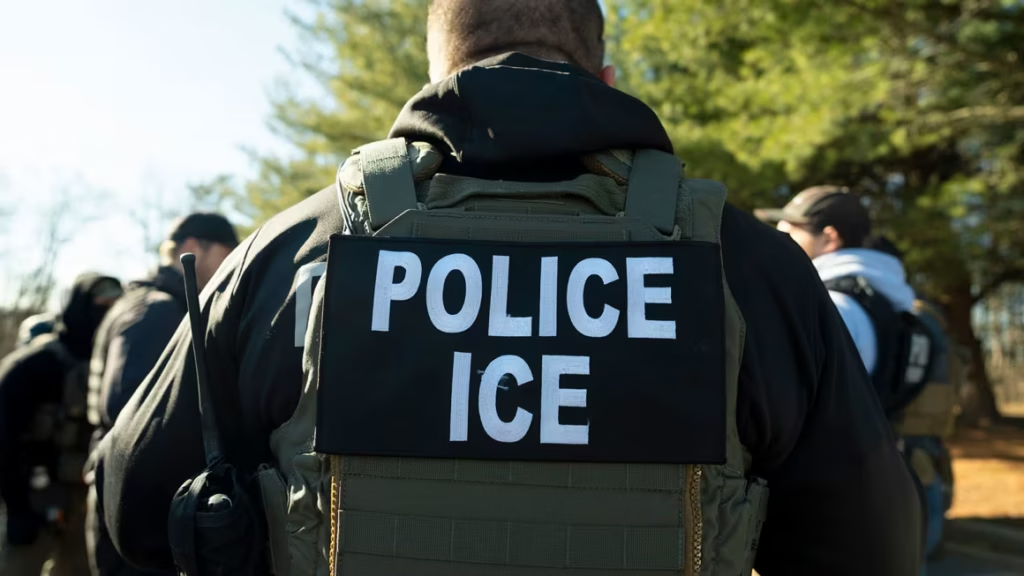Bogotá, April 3, 2025 – Plaza de Bolívar
It was a constant struggle to catch my breath under the ever-present reminder of the Andes. At about 2,600 meters, rainfall is quite frequent just beneath the slopes with a heavy run-off down the sleek, narrow streets that straddle the gliding hills of the capital of Bogotá. However, when dry the climate is actually quite accommodating as the cool winds sweep across the rugged mountain range.
The country is cut up by three of them, all lending a geographic landscape that has defined the troubled politics of this South American republic for more than two centuries. The reality is that since independence was won from the Spanish colonial overlords in the early 19th century, the central Colombian government has never really retained total control over its own national territory.
The almost impossible journey from Bogotá to some of the more isolated communities of the outer rural regions during this early period created a level of woeful neglect from the state, and feelings of distrust and disdain by those who inhabited them.
The air was much warmer on the weekend of March 8, and so were the politics. It was International Women’s Day and I decided to take a walk to the Plaza de Bolívar, the main square of Colombia’s bustling capital. Rallies were scheduled to take place the world over with demonstrations in Jakarta, Barcelona, Rome, St. Petersburg, and Mexico City.
In Bogotá, it was a morning of chants with feminist celebrations and women’s rights protests that were then accompanied by other political initiatives imported from abroad – calls for “Libre Palestina!” and makeshift post-boards that warned against a global rise in fascism – that took on a broader ideological coalition that suddenly outgrew the original cause that marked its day.
The protests, which take place annually, are organized to shed some light on the issues most important to the movement including gender pay disparities, women’s suffrage, abortion access, and the now LGBTQ/transgender movement that has only recently been enveloped into the revamped feminist program. But one issue concerning women’s rights and equal treatment is one widely under-appreciated, and yet so widely experienced by women who are victims, especially throughout Latin America, of domestic violence.
In 2022 for example, the Equality Observatory for Latin America and the Caribbean reported that 4,050 women were victims of femicide in 26 countries and territories, stating that “this is the equivalent to one gender-related killing of a woman every two hours in the region.”
But the messaging of such issues tends to be crowded out by the more pronounced behaviors of their messengers. The theatrics of vandalism always seem to be present at these events as protesters numbering in the thousands occupied the square whilst chanting and clamoring with the rhythms of song and dance.
A visitor not aware of the day’s movement or the subject of its protests would sympathetically recognize the mood as a religious ceremony of sorts, or a version of a spiritual rite inciting the rigors of the bodies of women drenched in sweat and painted lipstick spelling an alphabet soup of various acronyms, overcome by the tribal spells of some native custom.
The demonstration resembled less a political protest urging for short-term gains for a particular portion of society than a religious procession believed to be more meaningful than a representation of a mere ideology by its participants. Protesters spray painting slogans on national walls and the capital streets that carried narratives that, however urgent, were starkly unrelated to the protest’s raison d’être.
Contrarily, there were others who opted for a more modest tone to the demonstrations – less inclined to defile the square’s monument honoring the Father of Spanish-American Independence, Simón Bolívar, and would much rather reasonably convey their message to those who are willing to listen to them.
In the midst of the clamor, I noticed several reporters from local Colombian news outlets paired with photojournalists who were documenting the rally. One female protester was interviewed and I overheard her being asked by one of these reporters what issues were most important to her. The answer she gave was stoic and terse. “For me”, she said in Spanish, “it is the violence, the beatings. People don’t say it much here, but everybody knows… It is culture, it is culture.” A sad portent for a way of life for many women, and a recognition that there is so much more work to be done in this part of the world.
Enter Americana
There was the conspicuous presence of an air of anti-American sentiment and public rebuke of Western culture at large amongst the demonstrators, and undoubtedly in Colombia’s more rural communities where views of gringos are even less favorable.
Upon my arrival from the airport, for instance, I took a 20-minute taxi to La Candelaria district just south of central Bogotá where I was to stay during my visit. I walked into a restaurant nearby and requested to be served but was stiffly rebuffed and sent back on my way.
It is always recommended and incumbent upon visitors to adapt to the local customs of one’s host country, but if found to be difficult, to at least display an eagerness to try. I always make an effort to blend in with the local population. I am not new to the region, and I’m also not unfamiliar with the language, but still, the locals can always smell gringo from afar.
The animus is sometimes almost palpable in this region. It has been this way for 200 years. Some of the paradoxes lie in history. U.S.-Colombian relations have played an important role in the regional security of Latin America for many years. Millions of citizens of Colombian background reside in the United States as the two peoples seem to get along fairly well.
Colombia has historically been a close partner with the United States on various issues, not only on inter-hemispheric affairs but on issues abroad, as well. Colombia was the only Latin American country to send combat troops to support the U.S. war effort in Korea in the early 1950s. A half-century later, Colombia would also support the U.S.-led coalition into Iraq following the attacks on 9/11.
During the 1980s and 1990s, Colombia received the most amount of foreign aid from the United States only after Israel and Egypt. However unfortunately, as is so often the case in dealing with the “northern neighbor”, Latin American relations with the United States are often born out of intervention.
At the turn of the 20th century, a deal that involved the U.S. purchase of a stretch of land across the Isthmus in the Panama province fell through when the Colombian senate unanimously refused to ratify an agreement that would’ve sold the territory to the Americans. Upset by the snubbing, President Theodore Roosevelt’s administration helped foment rebellion among the Panamanians in response and placed its weight behind secession efforts from their Colombian patrons.
After a gunboat was sent to prevent the deployment of Colombian troops to smother the unrest in Panama City, the U.S. recognized Panamanian independence and finally got its piece of real estate for a future canal. Two decades later in 1922, the U.S. paid Colombia a $25 million indemnity for all the trouble.
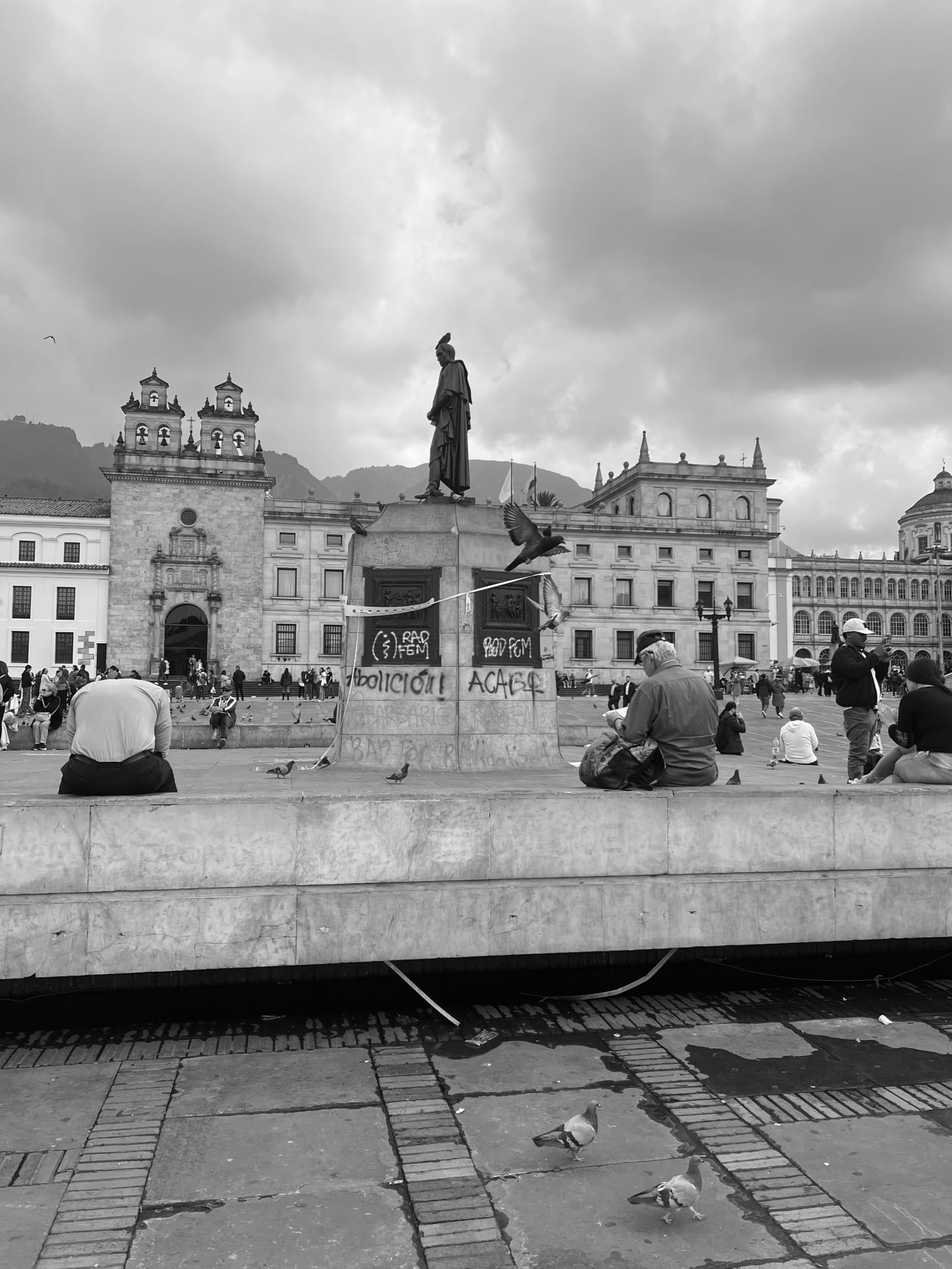
During the 1960s, rebel groups began to sprout throughout the region. The M-26-7 Movement in Cuba led by Castro, the Sandinistas in Nicaragua, and the Farabundo Martí National Liberation Front in El Salvador had their own share of vicious and bloody civil wars, and all the incumbent governments in these instances received the helpful hand of yanqui weaponry and financial aid that flowed in to quell the spread of the communist cancer throughout Latin America. But the problems that ignited these revolutionary spirits were very fundamental in nature, and eerily similar to one another.
The poor and powerless natives brooding over 150 years of inequality and disenfranchisement. The indigenous populations were largely ignored when suddenly the power held by the Spanish colonists was swiftly transferred over following independence to a small, oligarchic elite of wealthy land-owning aristocrats with white, Spanish heritage who too, would now rule over the large majority of poor share-cropping campesinos with indigenous blood running through their veins.
Generations of neglect, misrepresentation, poverty, hunger, and political, social, and economic repression angered the poorer populace. Discontent was everywhere until it all finally boiled over and blew the lid off of the whole damn thing and forever changed the way these things were usually done. History in short, for these republics had reached a point where there were simply too many peasants and not enough land.
In Colombia, there wasn’t much of a departure from the storyline. There were a handful of rebel groups vying for power during the 1960s, carving out territory to wage a relentless war against the state and the wealthy landowners whilst taking over swaths of private property and arable public land to redistribute to indigent rural farmers who were so long neglected by the central government in Bogotá.
The revolutionaries were guided by noble aims at first, as always. The yearning for equality and justice, freedom from repression, and the dream of arousing a national liberation movement to recreate a more just political and socio-economic model through agrarian reforms to serve the poor and hungry.
The Ejército de Liberación Nacional (ELN), the Ejército Popular de Liberación (EPL), and the M-19 Movement all took up arms against the establishment. But the main organization to steal the headlines and the acclaim of the world’s longest insurgency was the FARC under its supreme commander, the elusive Manuel Marulanda Vélez. The Revolutionary Armed Forces of Colombia, or the FARC – later the FARC-EP, Ejército del Pueblo (Army of the People) and its power spread so deeply throughout the regions of the southern provinces of Putumayo and Caquetá, as well as the eastern provinces of Guaviare and Arauca that by the 1980s these regions became the traditional strongholds of the organization. As the group’s influence and control grew, so did American interest along with it.
“A Dirty, Dirty War”
By the mid-1960s, at about the same time the U.S. military advisors were popping up in South Vietnam, U.S. counterinsurgency operations were heating up in the hills of Colombia, and the realities of what the locals would later come to know as the “Dirty War” was in its larval stages and only beginning to be felt on the ground.
This reality with its ugly similarities to what would later transpire in El Salvador during the heady years of the mid-to-late 1980s was the piling up of Colombian rebel bodies and indigent civilians who were caught in the middle of the violence between Colombian guerrilla fighters and the ruthless security forces of the state. History seemed to be repeating itself in Colombia.
Later in the week, I sat down with a couple of older gentlemen who were raised in Bogotá. They grew up during the tumultuous years of the late 1940s and 1950s when one of the first uprisings of the poor working class began to take shape. A period called La Bogotazo erupted when a populist figure of the downtrodden named Jorge Eliécer Gaitán was brutally assassinated in the streets of the capital in 1948 after leading a movement that called for the central government to implement a series of reforms to expand democracy, representation, and economic possibility for the urban poor and rural disenfranchised.
The unrest was quickly extinguished by the authoritarian figure of President Gustavo Rojas Pinilla who – a close ally of the United States – established the recommended course of action for dealing with any future challenges to the traditional status quo that exclusively served the oligarchic interests of the wealthy land-owing political class in Colombia.
One of the gentlemen I was joined by is a lawyer in Bogotá, and unapologetically slovenly in appearance. The other was an 80 year old bar owner – whose bar we found ourselves in. We sat at a thoroughly battered table over beers when I asked them their thoughts on all the turmoil further north. I was surprised at how indifferent they were to the events that have been garnering international attention throughout various global news outlets. I understood that violence and rebel unrest had been a part of Colombian society for decades, and perhaps they’re all used to it. But nevertheless, I was slightly bemused at their level of disassociation with the situation judging by their reactions to my inquiry. “What happens up there is of no importance to us!”, the lawyer blustered.
I remembered Mario Murillo, a journalist who wrote a book on the political history of Colombian destabilization pronouncing a similar sentiment in his Colombia and the United States when remarking on the social and cultural disassociation that has arisen between class and community within Colombian society. He shared a similar encounter when an independent member of the Colombian congress said to him, “People in the city could care less what happens to the campesino in the countryside.” It is no wonder then how such a deeply ingrained, and publicly blatant disregard for the imbalances in the socio-political dispositions that exist in Colombian society – between the poor, rural villagers, and the lower to middle-class urbanites – have shaped the historically official policy of the central government and their approach to dealing with the rebel peasants in the hills and forested Amazons of Colombia.
In the 1980s, American involvement in the region intensified. To smother the growing clout of communist rebels, civilians were often even targeted, especially by the infamous “death squads”, or far-right paramilitary groups operating on behalf of a class of wealthy landowners, drug traffickers, and conservative and liberal administrations of the central government, respectively.
Some of these private armies later evolved into the notorious AUCs (Autodefensas Unidas de Colombia) during the late 1990s, which were later designated as foreign terrorist organizations in 2001 by the U.S. government when public scrutiny for their actions was mounting due to inexcusable human rights violations, and extrajudicial killings of rural civilian populations perceived to be subversivos, or subversives collaborating with the guerrillas.
Ironically, during this same period, these paramilitary groups were being supplied with weaponry, training, and funding by the United States government in its drive to stifle the communist insurgency and reduce the expanding drug trade in which the guerrillas were becoming more involved. The U.S. government also sought to put a plug in the production and flow of illicit narcotics into the United States by the powerful Colombian cartels. But more importantly, by the use of this aid and the political support for these security forces – with close friends in Colombia’s presidential palace – the Americans were able to encourage the Colombian government to pursue political and economic policies that ultimately served American interests in return.
U.S. oil and multinational corporations have had their footprint in Colombia for quite some time due to the country’s rich petroleum deposits.
California-based company Occidental Petroleum for instance, owned operations in the eastern plains of Arauca where in the early 2000s during the Bush administration, an increase in aid and an expansion of operations into the country were part of his Andean Initiative to further combat the guerrillas who were conveniently categorized as insurgent terrorist threats after the attacks on the World Trade Center.
Under such terms, the U.S. government was afforded much more flexibility in dealing with the guerrilla movements in the country. During one year, FARC claimed responsibility for over 170 IED attacks along Occidental’s main pipelines in the region. An element of the U.S. Special Forces was deployed to help support and train Colombian forces and paramilitary groups who provided their own private security details to ensure a steady flow of revenue for the American oil provider.
When Venezuela turned sour in the late 1990s, Hugo Chavez quickly nationalized the country’s key industries including its oil production operations, pushing the U.S. to further cement its interests in Colombian oil in its stead, extending American interests in the country as it eventually became one of the most reliable sources for U.S. oil imports in the entire world.
After a half-century of insurgency, the FARC and other rebel organizations began to falter. Kidnappings, extrajudicial killings, allegations of child recruitment, incursions into indigenous territory, the murders of three American human rights workers, and successful U.S.-Colombian media campaigns to capitalize on legitimate reports of the movement’s backing and facilitation of the pernicious flow of drugs across the U.S. southern border, would later bruise the movement’s public perception as a corrupt, violent terrorist organization that no longer lived up to its core revolutionary ideals.
Relentless state security operations into the hills further weakened the military strength of the organization and in 2016, the FARC agreed to a peace agreement with the Colombian government that ultimately disbanded the organization.
The ELN, EPL, and other smaller groups, once boasting of thousands of members were now struggling to stay afloat by the mid-1990s.
Former President Cesar Gaviria then decided to open the country’s economy in what is now referred to as apertura economica, or an economic opening – similar to that of Brezhnev’s perestroika – of Colombia’s economy by availing the nation’s markets to multinational corporations, international banking firms and foreign investment opportunities. This ultimately suffocated the small, local businesses of the country as they were essentially made uncompetitive against the cheaper foreign goods that flooded domestic markets. This had the effect of shuttering these smaller enterprises out of business. The economy then experienced a severe recession and remained stagnant into the 2000s.
There were little opportunities for the younger generation as a result of this economic hardship. Many decided to head for the hills where recruiting for rebel groups increased. It turned out that poor, rural farmers eventually replaced unsaleable Colombian coffee beans with the profitable coca leaf, for which growers were now in need of an expanding army of collaborators to supervise the fields and bolster their operations against rival guerrillas.
The AUCs were also escalating their incursions into the rural regions during this period, and launched dozens of brutally violent offensives against the rebels, plundering and pillaging the area whilst committing some of the most vicious massacres, and inflicting tremendous damage to the guerrilla groups.
In the mid-2000’s, rebel numbers began to lag once again as young Colombians who were once enticed by the prospects of a dreamy, quixotic cause of global justice and national liberation were now increasingly more urbanized and well educated – generationally and empirically disconnected from the plights of their fathers and grandfathers.
Once the youth understood that these groups were now more dedicated to the fight for control over the drug trade than they were to the pursuit of social justice, commitment to these rebel groups was no longer the same.
In the aftermath of the fall of the Soviet Union and the ostensible death of the communist vision, these dreams were no longer attractive, and the idea of fundamentally altering Colombian society from the bottom up through a revolutionary movement that by all intents and purposes seemed like a relic of the last century was no longer relevant in the new world economy. In other words, the youth were frankly unwilling to sacrifice their new world comforts and die up in the hills for a movement that they no longer believed in.
Colombia Now
Since the early 1980s, illicit narcotics, especially cocaine have been at the root of some of the country’s most pressing problems, such as violence, rampant crime, addiction, poverty, public corruption, and an international drug trade that is in urgent need of curtailment. The coca leaf was at the center of a raging whirlwind of violence and terror where shootings, stabbings, car bombings, and other ferocious methods of killing claimed the lives of thousands during the reign of Pablo Escobar and the Medellín Cartel. Yesterday, it was the distributor who plagued Colombia’s streets, today it is the user, too.
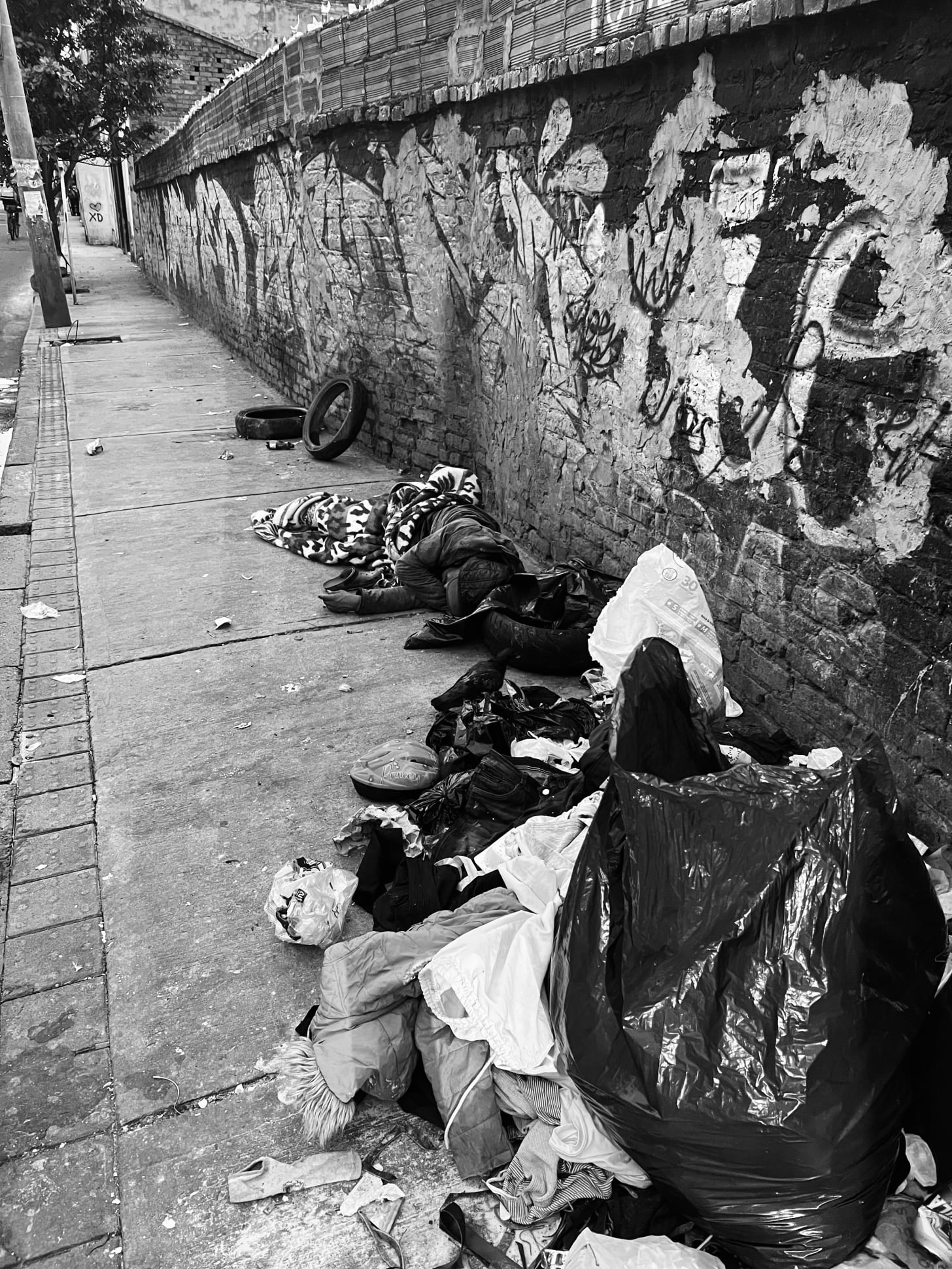
The current leftist administration of President Gustavo Petro, a former M-19 rebel himself, who was elected in 2022 set out on an ambitious program for his first term in office. One of his challenges was to make serious strides in eradicating the nation’s historic drug problem.
The Petro administration first began floating the idea of a new approach to the drug war that involved decriminalization measures but had received strong pushback from countries like the United States that were reeling from their own national drug epidemic arising from the deadly fentanyl crisis.
From 2022-2023, the United Nations Office of Drugs and Crime reported a 53% rise in Colombian cocaine production and a 43% increase in the total area harvested for coca growth in 2021. History seemed to be repeating itself in Colombia.
After years of fumigation efforts to eradicate the proliferation of coca crops with support from the United States, poor Colombian farmers have developed new and advanced methods for cultivating illicit crops while establishing new areas throughout the rural regions to dedicate to cultivation projects for the expanding drug trade.
Following the attacks on 9/11, the Clinton and Bush administrations pursued increased cooperation with the Colombian government to tackle the drug trade by increased fumigation campaigns and transitioning peasant farmers to the cultivation of “legal crops”.
The joint cooperation arrangement was in the form of an aid package to the country called Plan Colombia in which the two governments planned to reduce illicit crop cultivation in the country by 50% within a few years. The results were abysmal as there is now more coca cultivation per hectare today than there was in 2000.
In March of this year, President Petro outlined to his cabinet a similar project that aims to “eradicate 25,000 hectares of coca in the Catatumbo region within 140 days” by encouraging rural farmers to again, attempt to switch to “legal crops.” History seems to be repeating itself in Colombia.
Addiction has also increased over the last few years with Columbia University Irving Medical Center producing a 2024 report that found a 300% increase in overdoses in Colombia with a rise in cocaine and prescription opioids. In the continued war on drugs for the last 40 years, very little progress has been made in Colombia. A paste called basuco, derived from residual coca base is often smoked on the streets. Basuco, which means “trash” is frequently consumed by the homeless for its heavily addictive nature. It is also extremely cheap, which adds to a pervasiveness that makes it very challenging for law enforcement to crackdown on its sale and use.
When the FARC dissolved, a power vacuum soon emerged in the northeastern hills along the Venezuelan border in a region once held by the FARC. Smaller, but more ferocious rebel groups swiftly took its place. Today the rebel dynamics look drastically different as a turf war erupted in late January when ELN forces launched an attack in the Catatumbo region in a push to uproot rival rebel group 33rd front – consisting of mostly FARC dissidents who refused to demobilize after the peace agreement in an effort to seize the profitable drug trade with routes north.
The ELN was founded shortly after the FARC in 1965. Unlike its counterpart, the ELN is a movement that was originally inspired by the Cuban Revolution and made up of mostly young, urban, middle-class intellectuals who decided to head for the hills to help revolutionize the world. Murillo writes that the organization “was not a genuine peasant movement like the FARC but drew its base of support from disaffected middle-class youth.” A far cry from its heyday, the ELN currently has some estimates of 2,000-3,000 combatants, generating most of its revenue from overseeing coca production operations in Colombia’s rural regions, and the distribution of the cocaine trade to further north.
Shortly following the outbreak of violence earlier this year that has so far claimed the lives of hundreds of innocent civilians and displaced 60,000 inhabitants of Catatumbo in the northeast, the Petro government issued a state of emergency throughout the heavily contested region. Gone are the days of the hopelessly romantic dream of lofty revolutionary ideals for the common good of the poor campesinos.
The rebels are totally different now. They’ve replaced the noble fight for social justice and political representation with the corrupting thirst of the greedy drug trade that has seemingly toppled every movement and organization to drink from the poisonous cup of narco-Cupid.
The former rebel, President Petro, even condemned the new generation rebels back in the 2000s for changing their principles as a result of cocaine profits, calling them “barbarous” and “simply criminals.” The late Colombian Catholic priest who was popular among the masses, Miguel Serna warned the FARC in the 1990s of a radical departure away from their original revolutionary principles and the “loss of morals.”
Since January, dozens in the Catatumbo region have also disappeared at the hands of the ELN whose members are sweeping communities and poor villages in search of collaborators with enemy groups. Many of the disappeared are women and children.
The ELN is also accused of kidnapping children from the area and recruiting them as child soldiers, forcing them to serve among its ranks. Poor farmers, the sick and elderly, and innocent families have since fled their homes to seek refuge elsewhere. Yesterday it was mostly state security forces carrying out the arbitrary killings of rural indigent populations of Colombia’s hill regions. Today it is the violent, greedy rebels who carry the same disdain for the central government that they harbored in earlier times. History seems to be repeating itself in Colombia, once again.
The South American republic has certainly come a long way over the years. There are many positive developments that continue to come out of the country. Colombians are a people who are welcoming and enthusiastic for the future and carry with them a national pride difficult to find equal anywhere else in the world.
With that said, the failure of the current regime to bring in a new era of peace between warring guerrilla groups and the Colombian government has also been an utter failure. The “Total Peace” approach to negotiations with the rebels has been a disaster politically for the Petro government. His administration currently has one of the lowest approval ratings of any Colombian administration in recent history, and his last year in office may be no easy ride with a second Trump administration in the north.
With decades of internal violence and thousands of citizens displaced – over 3 million total since the inception of the rebel movements 60 years ago – the administration has a very short time to accomplish as much of its program as it can before the next presidential election in May of 2026. Only for now, its prospects appear to be grim.

